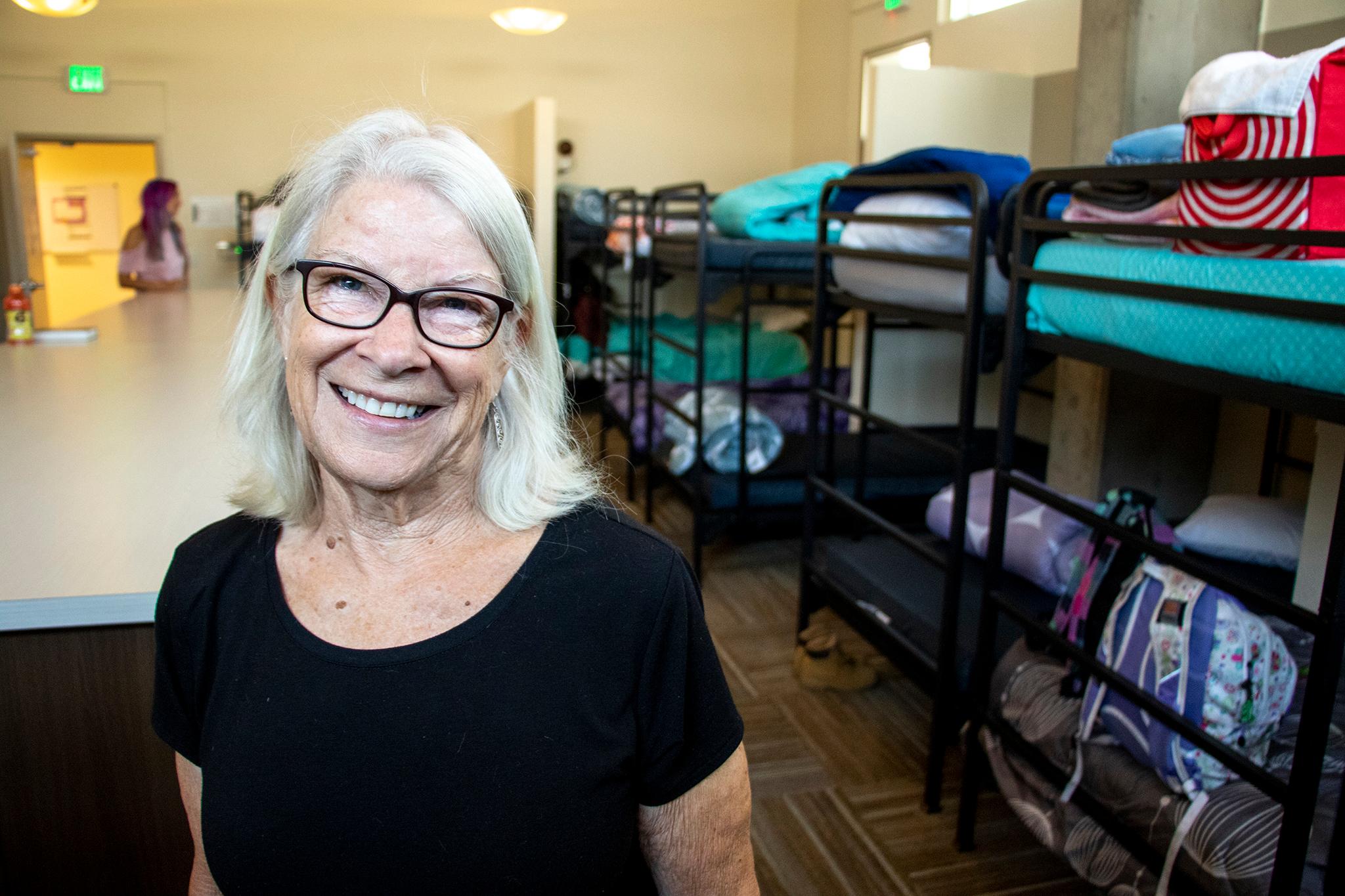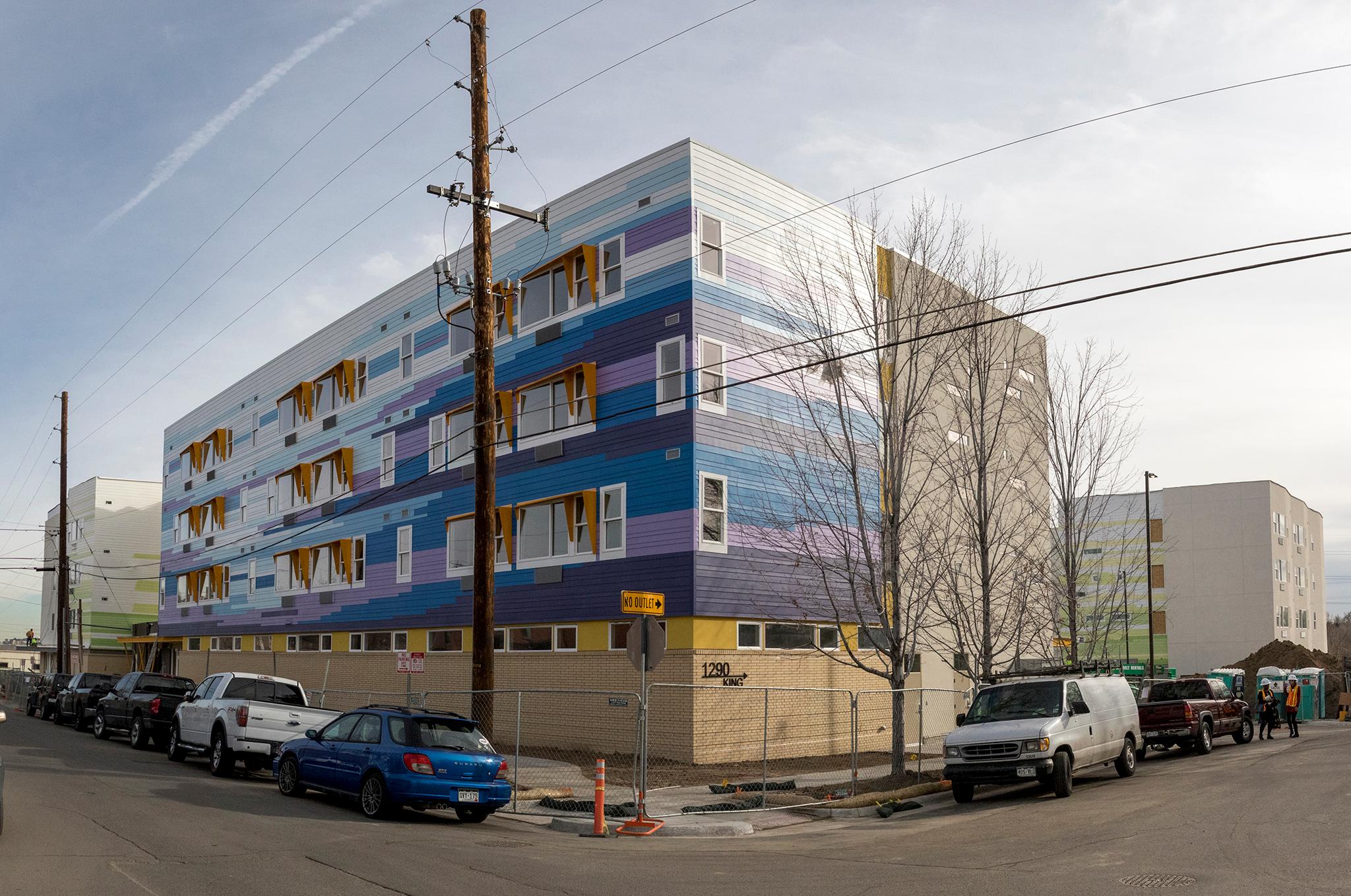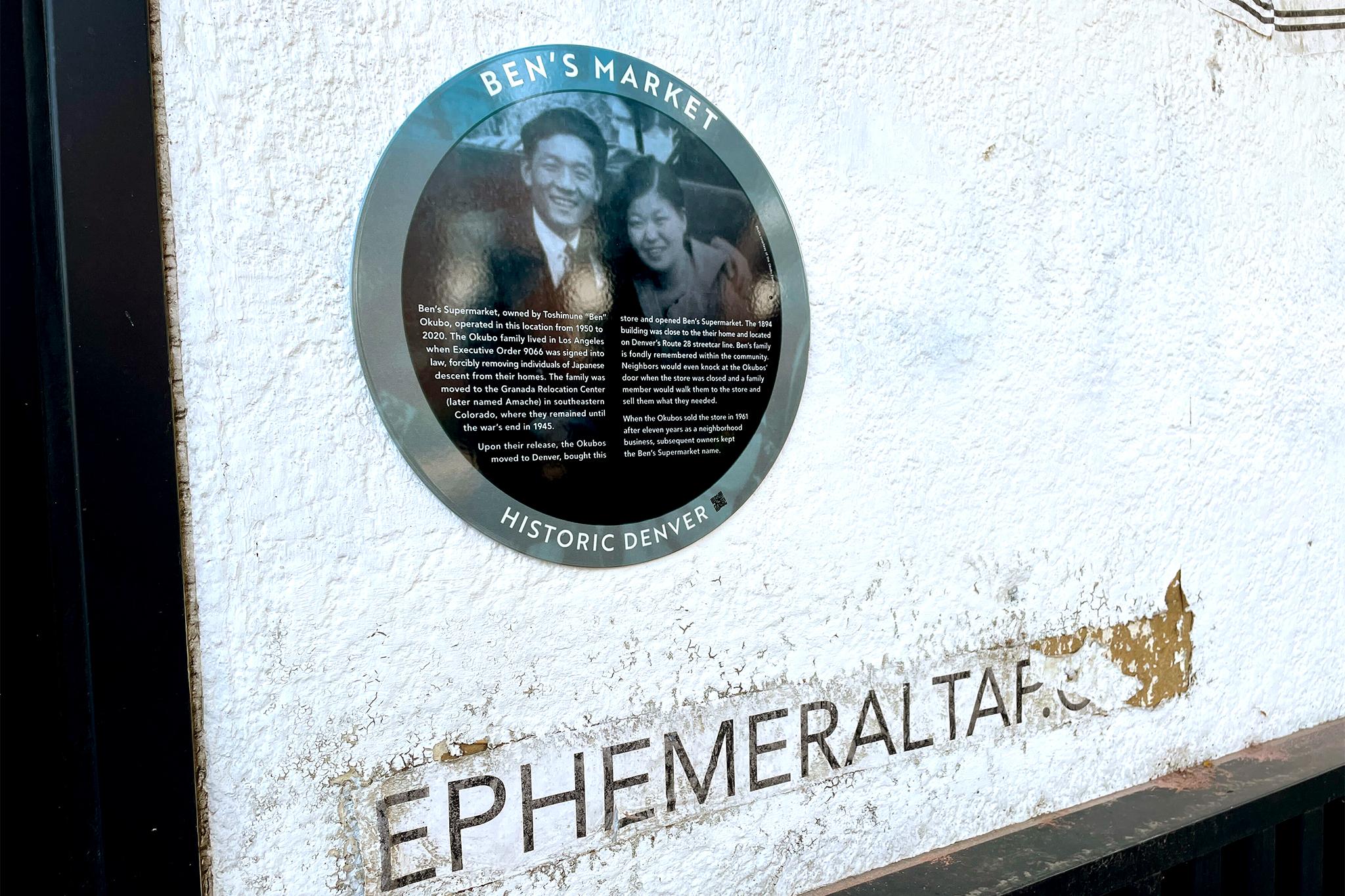Words are important to the first director of the The Delores Project, which has for two decades offered a haven to women and transgender people.
The term "shelter" sounds to Julie Duffy like a place where "we provide a service to people who can't take care of themselves."
Even more telling is Duffy's choice of pronoun for the project was named for a friend, Delores Big Boy.
"Delores just carries on. And she does it competently and beautifully. And that's not because of me personally, but because everybody who's served in leadership there has understood the importance of building a strong organization that's not dependent on any particular person."
"She feels like a she," Duffy added.

Big Boy died on the streets in 1999, a few months before the opening of the house named for her. She is nonetheless closely linked to the Delores project. In March Big Boy's relatives came from the Dakotas, Wyoming, and elsewhere in Colorado to a housewarming for a new Delores Project building. At that gathering, Big Boy's brother said a Lakota prayer.
Duffy, a social worker, was a service coordinator at the Colorado Coalition for the Homeless when she met Big Boy in the 1990s.
Duffy's job involved greeting people coming in from the streets and determining what their next steps could be.
Duffy also hosted a peer support group for women experiencing homelessness. Big Boy regularly attended the sessions.
"She was very dear. Thoughtful. And very shy," Duffy recalled. "She always had a (kind) word for someone else who was sharing a tough story in group."
Big Boy offered solace when Duffy's mom died, making her a card with a message about all the things our mothers teach us. A line Big Boy wrote is still vivid for Duffy: "I remember my mother taught me to make fry bread."
Big Boy, who struggled with substance abuse, may have started coming to the women's group under court order, Duffy said.
"She kept coming on her own because she liked it," Duffy said. "She mostly lived on the street. She rarely took shelter because she had a partner, a boyfriend, and you couldn't go into shelter with a partner."
Today it's still difficult for couples to find shelter together, one of the reasons some people living in homelessness prefer the streets.
Even with a partner, it can be a dangerous choice. Duffy once took her friend to the police after Big Boy told her she had been raped.
"I said, 'Delores, they may ask you questions about what happened and I know that may not be easy for you to think about that or talk about it.,'" Duffy said. "She said, 'Oh, don't worry, this has happened to me before.'
"She was comforting me."
The streets Big Boy called home also were a tough place to keep healthy.
"She died on a bus bench. She was diabetic and she went into diabetic shock and died," Duffy said.
The dangers of the streets, meanwhile, gained national attention for Denver in 1999. That fall, five men living in homelessness were found beaten to death in LoDo. That led the city to convene meetings to which Duffy was invited because of her work with the coalition. She and several others focused on women on the streets.
Duffy said Leslie Foster of The Gathering Place shared a story about seeking solutions that resonated. Foster had met a woman living on the streets who was so fearful at night that she would climb a tree and secure herself to a limb with a rope. One night the rope broke. The woman came into Foster's day shelter to ask for a new tether.
"Imagine not trusting that any more than that could happen for you," Duffy said. "How humble is your want for yourself that you would just say, 'I need a rope'? You don't even think you could have shelter or a home."
Brothers Redevelopment, a housing and community support nonprofit, had approached the group discussing homelessness to offer the use of a house along the Platte River. Brothers was using it only during the summers, to house volunteers.
"It had a little kitchen," Duffy said. "It had a couple of bathrooms. A little room where the house mom and dad could be. And a lot of bunk beds, "
She and others saw an opportunity.
"We just knew that we could meet a crying need," Duffy said.
Amid the publicity about deaths on the street, Denver rallied around their plans. Samaritan House and the Empowerment Program were among service providers that along with the city provided technical, financial and other support. Faith groups, businesses and individuals made donations.
"The toilet paper came rolling in," Duffy said.
"The maxi pads and the toothbrushes. Food for the house because we would provide breakfast."
"I volunteered or someone volunteered me to be the coordinator for three months," Duffy said. "And I was there for six years."
The little pink house on the Platte opened as The Delores Project on Jan. 1, 2000 at 3:30 in the afternoon with 30 beds and, for the overflow, six air mattresses. A dozen guests spent the first night.
"Within a few days we were full every night and never not full," Duffy said.
It was initially a winter shelter, shutting down every spring and re-opening every fall.
For the most part women heard about Delores by word of mouth or were referred by other service providers. Sometimes police officers would show up with a woman in distress.
Duffy knew women coming in would be "living in pain," as Big Boy did, and that that could sometimes make them hard to be around. Other shelters had closed their doors to women Delores welcomed. The only behavior that could get you barred from Delores was carrying a weapon or being so drunk you needed medical attention.
"We tried to make it really easy to come," Duffy said. "We tried to make it the shelter of last resort."
Women did not have to say much about themselves when they arrived for the night. They did not even have to give their names. They would be asked: "What do you want us to call you while you're here?"
And they always found a neatly made bed covered in a donated quilt.
"Would I ever throw sheets at you if you came over to my house to stay? No," Duffy said, a note of indignation in her voice.
"The quilts were handmade. Brand new. That became a big symbol of hospitality."
In developing processes and rules, Duffy would ask herself: "What would Delores think of this? Would she call us out on that?"
"I wanted it to be a place where Delores would have wanted to stay," Duffy said, acknowledging that her friend might still have chosen to remain outside with her boyfriend.
From the beginning Duffy saw the benefit in hiring staff who had a history of homelessness. Some were Native Americans, including Lakota, as were many guests.
"I know that among the community it made a difference that we had someone on the staff who was Lakota herself and had been homeless herself," Duffy said.
Delores did not offer traditional therapy, but would make referrals. For the most part, support consisted of listening. Duffy described a staffer once sitting cross-legged on a bed, knee-to-knee with an agitated woman, humming and talking the guest through the night.
"We did a lot of tea," Duffy said. "We tried to be with people. Sit beside people. Stand beside people. And try not to think of of them as a diagnosis -- even though some of them had one or needed one."
After a few years, Delores started what Duffy called a rudimentary case management program, supporting women who wanted to make changes in their lives. Regular workshops were held to help women find permanent housing. An art program was developed that led to an annual art show fundraiser.
After six years, Delores House moved out of the Platte River home, which was demolished as part of a park redevelopment, and into a building it bought from the city. With the move Delores became a year-round shelter.
By the time Duffy left in 2006, to move out of state to care for an ailing sister, Delores had a formal board, not just an ad hoc group of supporters and visionaries.
"Delores was growing," Duffy said. "She couldn't help it. She gained just by virtue of who she was (and) a really positive reputation among the homeless and the service providers."
For the first year or two, Duffy had been on call 24-7. Later she would work a night shift every now and then.
"I felt like it kept me real."
Stephanie Miller, a marriage and family counselor who took over The Delores Project earlier this year, made a point of working the night shift soon after she arrived to ensure she understood all aspects of her job. Miller succeeded Terrell Curtis, who led the project for most of the period since Duffy's departure, and had overseen the construction of a new 60-bed shelter that was built alongside Delores's foray into permanent housing: a 35-apartment complex for people earning 30 percent of the area median income. The Delores-run apartments and shelter share a building with 95 one-, two- and three-bedroom units for low-income families that are managed by another nonprofit.
Women coming out of homelessness have access to mental health and other services at the Delores apartments. The range of services at the shelter has grown.
"Now Delores is so much more," Duffy said.

Duffy has been working on a book about Delores's early days. She can refer to her journals and a sheaf of photographs, including shots of staff and guests in the Platte house and one of then Denver Mayor John Hickenlooper at the 2006 opening of the building that has since been razed to make way for the new shelter and housing complex.
As she writes, Duffy said, "The house is always a living entity."













